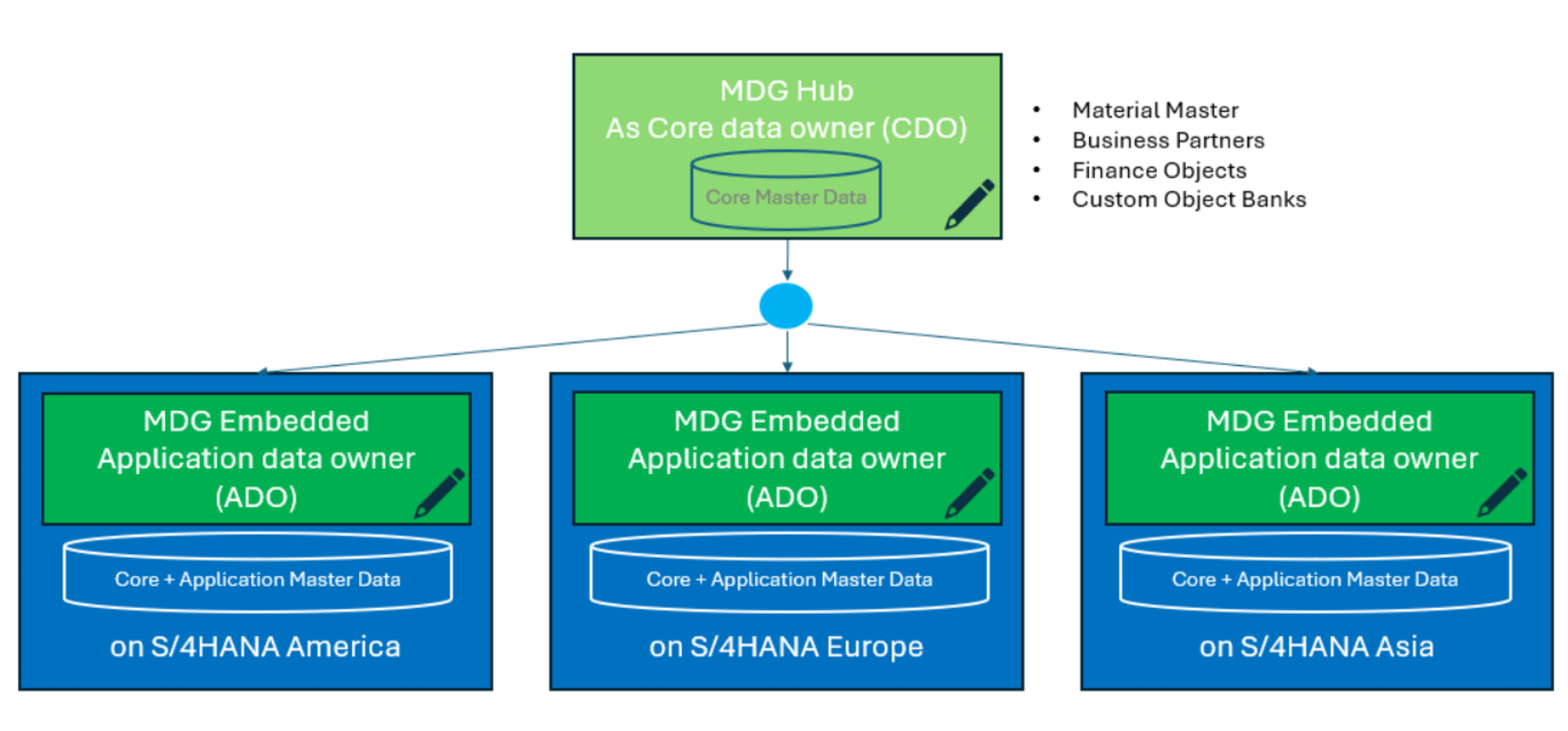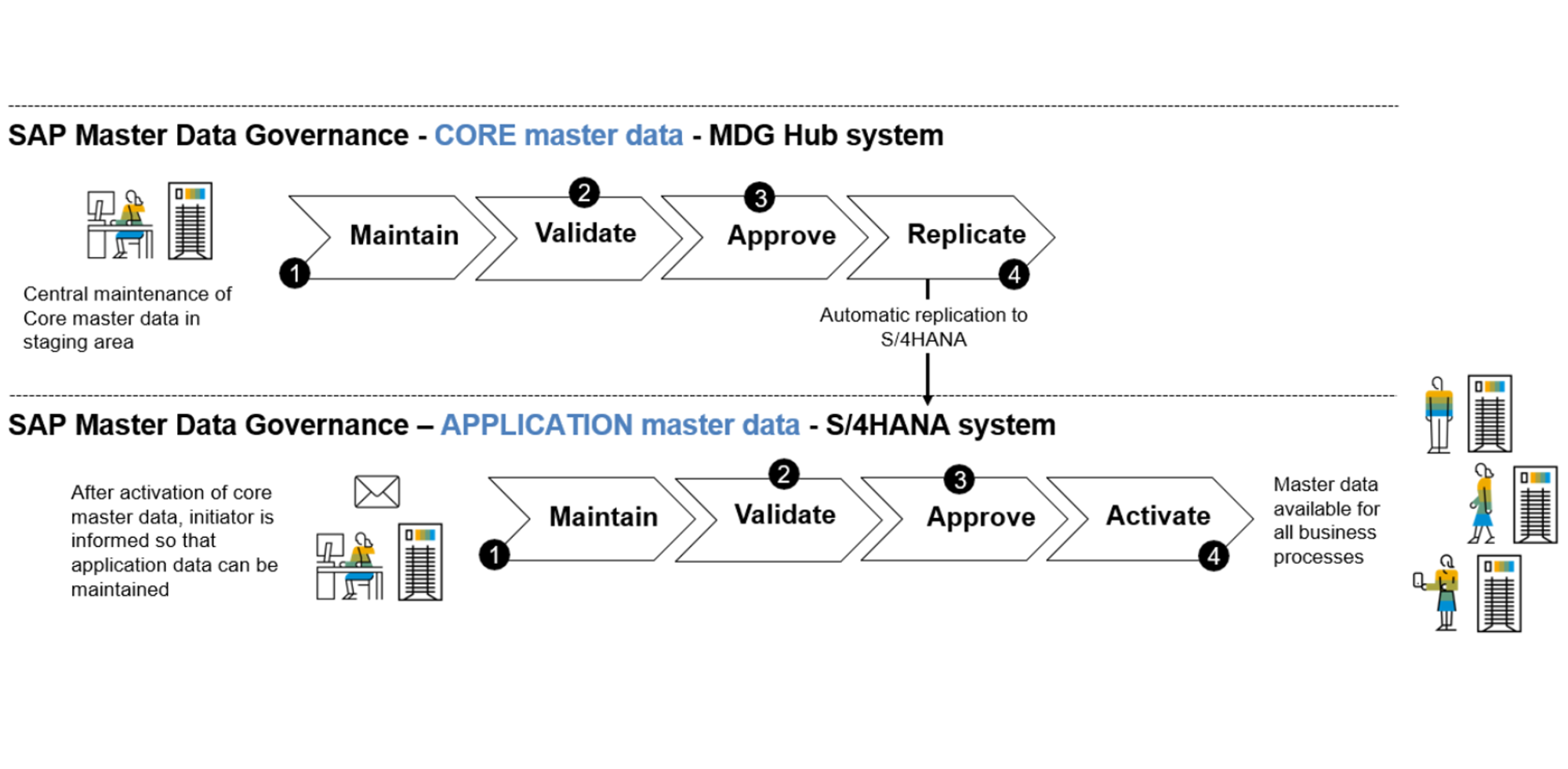Federated Master Data Management shaping the future
In the fast-evolving digital economy, managing master data effectively is more than an IT challenge, it’s a strategic necessity. A leading Norwegian multinational with over 18,000 employees across 60+ countries faced precisely this challenge. Operating in the chemistry, transport and agriculture industries, they are running a highly distributed and outdated ERP landscape with disconnected systems and fragmented processes.
In collaboration with Alluvion, the organization successfully designed a SAP Master Data Governance solution that balances global control with local flexibility, creating a scalable and robust master data framework. This case study highlights how this partnership helps them to achieve their vision for streamlined data governance and operational excellence moving towards a more harmonized landscape.
The challenge: from fragmented to federated
The organization’s key challenges come from its diverse operations and legacy systems.
-
Fragmented data landscape and governance challenges
The organization has multiple ERP systems across regions, leading to inconsistent, duplicate, and unreliable data. Departments use different naming conventions and manage data in silos, resulting in low trust and poor data quality. There is no clear ownership or governance, and local teams make changes without oversight. Data standards are lacking, rules are not centralized, and reporting suffers as a result. This causes delays, errors, and inefficiencies. As trust in the data declines, teams rely on manual workarounds, further slowing down business processes. -
Manual, error-prone processes
Master data maintenance relies heavily on outdated workflows. Emails, online request forms, and Excel uploads are used to manage their master data. This not only consumes valuable time but introduces frequent errors and data inconsistencies, impacting end-to-end business processes. These repetitive, manual tasks often result in poor master data quality.
It became clear that a new, structured approach to data governance was urgently needed.
The solution: implementing SAP MDG in a federated model
The transformation started with a bold vision: build a federated MDM architecture using SAP MDG introducing the CDO/ADO governance model for Business Partner, Materials, Finance and Banks (Custom Object).
CDO/ADO Governance Model
A federated model was introduced, clearly separating responsibilities:
- Core data owner (CDO): Maintains the core data on corporate level in the central MDG Hub. Core data is considered corporate wide that is applicable globally and remains steady over time, for example the name, the VAT-number or address data.
- Application data owners (ADO’s): Extend and enrich the data to meet local requirements. Application data is information which is applicable locally and changes more often, for example plant-specific data, company code data, sales data or purchasing data.

End-to-end governance workflows
End-to-end governance workflows were created for master data objects to have a seamless, clear and automated process.
To illustrate the federated model in action, a Business Partner (Customer) creation is detailed out below.
- Initiation in MDG hub
The request starts in the central MDG system, where core data like name, VAT number, and address is maintained and approved. Validations ensure the data meets global standards. - Replication to regional system
Once approved, the core customer record is automatically replicated via SAP’s Data Replication Framework (DRF) to the relevant regional S/4HANA system. - Local extension
The local team receives a notification and enriches the customer with application-specific data such as sales org, company code or payment terms using its own governance process. - Activation
After validation and approval, the customer record is activated and ready for use in local business processes.
This workflow ensures a structured, reliable customer creation. It reduces manual effort and enforces validations at each step, while ensuring that data is governed where it is best understood.

System Integration & Replication Framework
Seamless integration is critical to the project’s success. Alluvion set up the SAP Data Replication Framework (DRF) to replicate newly created/changed core master data from the CDO system to regional ADO systems via IDocs.
Alluvion developed a custom program that automatically starts extension requests on the regional ADO systems for any replicated master data objects from the CDO. During the extension, the relevant stakeholders can finalize filling in the application data.

Accelerated delivery with Alluvion’s value-driven approach
Alluvion used its own agile project methodology, the Alluvion MDG Project Booster, to kickstart and successfully deliver MDG projects using:
- Preconfigured best practice scenarios
- Standardized documentation templates
Besides the SAP MDG standard setup, our Alluvion MDG Productivity Pack (MPP) was installed on both the CDO and the regional ADO systems. This results in increased data quality, user experience, and operational efficiency. Below, you can find some of the MPP’s features we introduced and their benefits.
- Sensitive fields: Enabling scenario-based step skipping
- If a sensitive field is filled in or changed, an extra approval is required by a predefined stakeholder in the flow
- Colour coding in the UI to easily identify which field was changed
- Derivation framework: Automatically populate default values based on conditions
- Field-properties (validation framework): Dynamically set fields to hidden, read-only, mandatory depending on workflow steps and conditions
- …
For more details, visit our website to deep dive into the Alluvion MDG Productivity Pack (MPP).
The value – benefits
This project represents a leap forward in master data management, some of the key outcomes:
- Improved data quality
Validation rules and standardized workflows led to consistent, reliable and de-duplicated master data across systems. - Reduced manual work
Automated workflows replace Excel uploads and emails, freeing up valuable time and reducing human errors. - Clear roles & ownership
The governance model ensures clear data ownership. Each team knows exactly what data they are responsible. - End-to-end visibility
The integrated process provides a clear view of data from creation to activation, enabling better oversight across systems.
A blueprint for the future
This federated MDM model now stands as a blueprint for organizations aiming to modernize their master data governance. It proves that even in complex global environments, it's possible to implement a flexible, future-proof solution that empowers teams and improves operational performance with clear data ownership.

Thomas Cannoodt
SAP Master Data Consultant
Recent Master's graduate in Business Administration and IT, is a dedicated SAP Master Data Consultant and enthusiastic about computer technology. Thomas is a teamwork-oriented, independent, and motivated professional. Eager to apply theoretical knowledge to practical SAP business solutions.

Mano De Backer
SAP Master Data Consultant
SAP MDG Consultant at Alluvion, MSc Business Administration. Expertise: Certified in SAP MDG, BRF+, SAP MDG Consolidation, SAP Data Quality Management, Design Thinking, AI ethics, SAP BTP. Certified in Business Process Integration with SAP S/4HANA 2020 & Prince2 Project Management.
Let's Make Your Story Next!
Your own success story awaits. Click below to begin your personalized experience.
Let's embark on this journey together!
Connect Now for Your Success Story

